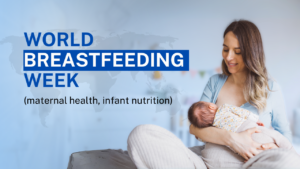
Recently an article was carried by the media reporting the death of a teenage boy in London. Apparently, he suffered irreversible brain damage after drinking a protein shake to “build muscles.”
Brain damage was attributed to a rare genetic condition called ornithine transcarbamylase deficiency or OTC deficiency for short.
This is yet another half-baked sensational headline creating more confusion than providing clarity!
Are protein shakes and building muscles harmful? Let’s understand the basics of OTC deficiency and its link with protein.
OTC deficiency is a rare X chromosome-linked genetic disorder characterized by complete or partial lack of the enzyme ornithine transcarbamylase.
OTC is one of six enzymes that play a role in the breakdown and removal of nitrogen (ammonia) in the body, through a process known as the urea cycle.
Ammonia is produced from the breakdown of ALL PROTEINS not only whey protein shakes and is converted to urea in the liver via the urea cycle. It is then eliminated through urine.
OTC deficiency results in excessive accumulation of nitrogen, in the form of ammonia (hyperammonemia), in the blood. Excess ammonia, which is a neurotoxin, travels to the central nervous system through the blood, resulting in the symptoms and physical findings associated with OTC deficiency.
Why are males affected more?
Males have one X chromosome inherited from their mother. If a male inherits an X chromosome that contains a defective gene, he will develop the disease. Many males with OTC deficiency have an abnormal OTC gene as the result of a new mutation later in life as opposed to an inherited defective gene from their mother.
Females have 2 X chromosomes. Those who have a defective gene present on one of their X chromosomes are carriers for the disorder. Carrier females usually do not display symptoms as severely as do males as only one chromosome carries the defective gene, the other one being normal.
Diagnosis
Urea cycle disorders like OTC deficiency often go unrecognized as they are not a part of routine newborn screening.
Symptoms
Symptoms include vomiting, loss of appetite, progressive lethargy, and coma due to very high levels of ammonia. They could also show psychiatric symptoms, mimicking those with psychiatric diseases. Symptoms tend to show up over a course of time.
In males, symptoms typically begin during the first few days of life. Late-onset OTC deficiency can present later in childhood, but may also occur as late as 40-50 years of age.
Adults with late‐onset OTC deficiency show various symptoms triggered by multiple factors such as stress, dietary protein overload, strenuous exercise, pregnancy, starving, medications such as corticosteroids, valproic acid and severe illness.
Dietary Management:
A protein restricted diet is necessary to maintain ammonia levels in those with the disorder. The type of protein that has triggered symptoms as per some documented case presentations have been of animal origin. There are also cases where the condition was triggered in the absence of a high protein intake.
Take home:
Protein of either animal or plant origin does not cause the mutation or genetic defect leading to OTC deficiency. Once the condition is inherited or developed due to a mutation, high amounts of dietary protein can be one of the triggers that lead to symptoms.
Symptoms tend to build up over a course of time. A thorough evaluation and work-up of these symptoms must be conducted by the healthcare team leading to the diagnosis of OTC deficiency as there are other diseases with similar symptoms.
Once an OTC deficiency is diagnosed, a low protein diet is needed to maintain ammonia levels. The source of protein in a low protein diet is important. While the aim is to keep the ammonia levels within range, it must also support maintenance of lean mass.
A low protein diet must be planned under expert supervision. A qualified dietitian has the expertise to assess the patient’s nutritional status, protein tolerance, modulate the right type, amount of protein, and ensure adequacy of the diet with respect to total calories, carbohydrates, fat, and essential micronutrients.
~Shweta Bhatia, Registered Dietitian





